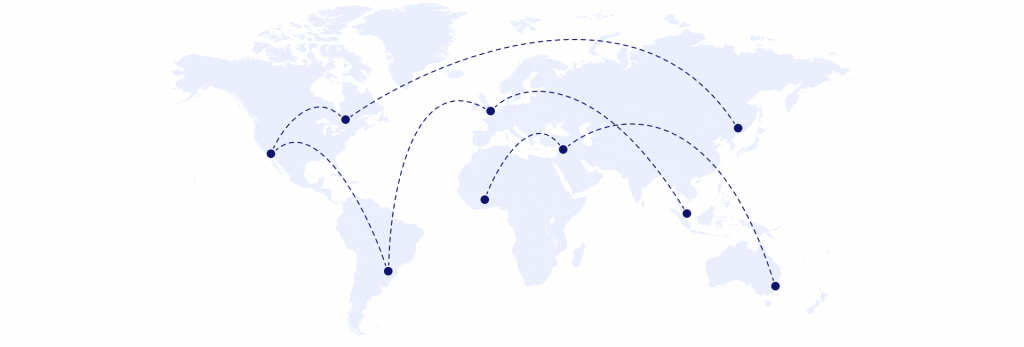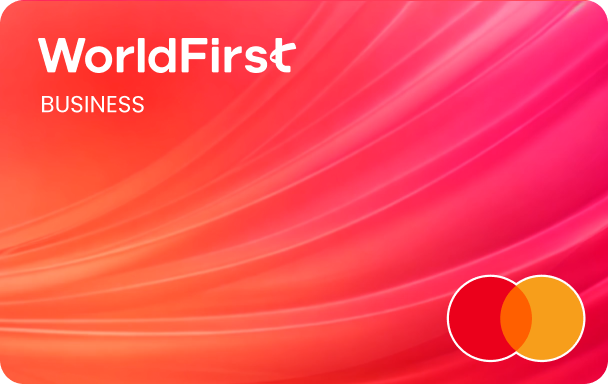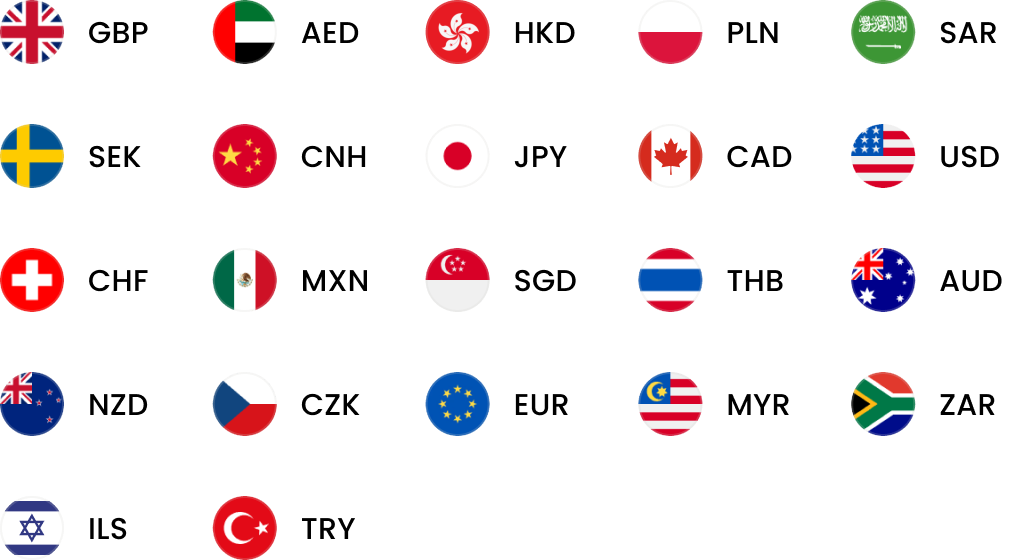6 strategies for breaking into new markets
International success is a major goal for many UK companies — but breaking into new markets can be challenging. Read on to learn effective strategies for breaking into a new market.

Domestic success is encouraging; international success is downright riveting. If you’ve done well in the UK, you might decide to try your hand in an international marketplace, too. Breaking into new markets isn’t easy, but if you’re successful, you could boost your company revenue in a big way.
We’ll go over reasons to take your company global at the beginning of this guide. Then, we’ll explore strategies for breaking into a new market — in other words, we’ll arm you with practical ways to expand your business internationally.
- Types of markets
- Why expand into new markets?
- How to expand into foreign markets
- Breaking into new markets: strategies for success
Types of markets
The term ‘new market’ is relative — a new market for your business might be an existing market in the UK, or it could be an international market you haven’t explored yet. Several distinct types of market exist:
- Existing market: Existing markets are well known and clearly defined. To break into an existing market, you’ll need to challenge established competitors — and you’ll have to demonstrate a compelling value proposition to make progress.
- Resegmented market: Some innovative companies create new markets by dissecting existing markets. They target a specific niche with a custom product or service and position themselves as a market leader.
- Clone markets: When businesses in one country copy markets in another, they create clone markets. Clone markets are most successful when target consumers don’t speak the same language as people in the original market region.
Why expand into new markets?
Simply put, new markets represent opportunities to extend your brand’s reach, grow your consumer base and make more money. If your industry peers have already broken into new markets, your own expansion will bring you level with them. You may also be able to stay ahead of the curve entirely via foreign expansion.
Many British companies expand into new markets successfully. One example is healthy fast food chain Leon, which initially launched in London in 2004. After capturing a slice of the UK restaurant industry, Leon set its sights on the Netherlands, on Norway and then on Gran Canaria. In 2017, Leon secured £25 in funding from Swiss investment firm Spice Private Equity.
Cost management company Auditel was founded in Britain in 1994 and subsequently expanded into Europe. Landline call blocker manufacturer CPR Global Technology won the Queen’s Award for International Trade only eight years after it launched in 2010. Sporting product manufacturer Net World Sports began trading in the UK in 2009; now, the company operates in more than 100 different countries.
To expand abroad, you’ll need to plan ahead, stay flexible and invest sensibly. You’ll also need to develop an export strategy, and you’ll need to find an international currency transfer partner — WorldFirst, for example — to facilitate cross-border transactions.
How to expand into foreign markets
If you decide that foreign expansion is for you, you can use the following eight-step strategy to plant yourself firmly overseas:
- Audit your business: Perform a SWOT (strengths, weaknesses, opportunities and threats) analysis on your company and use the results to create a list of objectives for your organisation.
- Summarise your USP: Outline your unique selling proposition, and conduct market research to see if your product will perform well in your target country. If not, can you target somewhere else instead?
- Complete a competitive analysis: Define direct competitors in the foreign marketplace and perform a competitive analysis to assess your peers’ strengths and weaknesses.
- Create a budget: Make a list of potential expenses for your foreign expansion endeavour. Include equipment costs, technology expenses, shipping and warehousing costs, postage costs, consultant fees and other unique costs.
- Set goals: Use your competitive analysis results and your knowledge of the target market and the infrastructure in the foreign country to create a realistic list of waymarkers and goals for your expansion strategy.
- Cement your logistics plan: Create a shipping and warehousing strategy to move products into your target market and consider how you can shorten lag times during delivery.
- Set up your online presence: Design and deploy your website, set up your marketplace seller accounts and create product and service content for consumers in your target market. Make sure you translate packaging and product descriptions for non-English speaking customers
- Go live and track results: Make your strategy live and track key performance indicators (KPIs) to monitor the results of your expansion strategy over time.
- Open 20+ local currency accounts and get paid like a local
- Pay suppliers, partners and staff worldwide in 100+ currencies
- Collect payments for free from 130+ marketplaces and payment gateways, including Amazon, Etsy, PayPal and Shopify
- Save with competitive exchange rates on currency conversions and transfers
- Lock in exchange rates for up to 24 months for cash flow certainty
Breaking into new markets: strategies for success
According to research by business support service Newable, more than 6 in 10 UK-based SMEs were ready to adopt an international growth strategy in 2020. The COVID-19 pandemic struck not long after Newable published its survey, throwing plans into turmoil for the rest of the year and a substantial portion of 2021.
Could 2022 represent a new beginning for foreign expansion? We think so. With that in mind, here are six practical strategies you can use to extend your reach beyond UK borders.
Strategy 1: Follow your customers
At first glance, foreign markets seem completely unfamiliar. Overseas consumers have different cultural traditions, prefer different brands and have different seasonal shopping habits. It can feel intimidating to make connections and build consumer relationships in new markets. On the one hand, foreign expansion represents a fresh start; on the other, it’s a lot of work.
If you’re a B2B enterprise, one solution is to follow your existing customers into new marketplaces. Some of the people you already do business with probably have contacts in countries you want to break into. You can leverage those connections to your advantage.
Some companies actively seek to involve themselves in client expansion strategies. If you do this, you can limit your risk and assess foreign markets before you commit to your own expansion plans. Referrals from existing clients can also help you build a good reputation — and a solid customer base — in an unfamiliar country.
Strategy 2: Create connections
If you’re lacking existing connections, build new ones. A full 85% of respondents to a recent Bizzabo survey said that in-person conferences and meetings were a critical part of business success. Perhaps surprisingly, 61% of participants felt that face-to-face events were their most critical business marketing channel.
Kara Krause, SVP of Event Marketing and Communications at E.J. Krause & Associates, agrees. According to Krause, in-person events are much better for business relationship development than virtual events. Virtual events, while convenient, lead to ‘Zoom fatigue’ and disengagement, while in-person events trigger communication and collaboration.
As recovery from the pandemic continues, hybrid and live events will almost certainly increase in frequency. You can use webinars, in-person meetings and hybrid conferences to boost brand awareness and strengthen international connections in advance of overseas expansion. Consider setting up ‘lunch and learn’ events with potential distributors in foreign markets, for instance.
It’s important to recognise where connection-building lies on the client-acquisition scale. Face-to-face meetings don’t have to be high-stakes events. Instead of focusing on closing deals, use in-person meetings to build rapport and connect with potential customers. Think of workshops and brainstorming sessions as strategic exercises — top-of-the-funnel opportunities to network.
Strategy 3: Focus on service
A new market is the business equivalent of a clean slate, which can be a blessing and a curse. Benefits of breaking into new markets include a greater number of potential customers; drawbacks include a lack of consumer product knowledge and general unfamiliarity with your company.
Some organisations try to disperse product knowledge fog by bombarding consumers in new marketplaces with information. Education is part of the battle, but it’s not everything. Companies that use client-centric strategies to develop relationships with consumers instead of focusing exclusively on explaining product benefits often find breaking into new markets easier.
Relationship-building is a long-term strategy for success. Strong relationships with clients — especially in new markets — often improve customer retention rates, and can also help to increase average order value (AOV). Later on, loyal customers are likely to tell other people about your company or your product, thus helping to build your customer base.
Let’s segue back to virtual and in-person events for a moment. When you attend or host webinars, conferences or workshops, you increase your exposure in the local market. The more popular you become, the more likely you are to connect with well-known business partners — and when brands work together, they often elevate each others’ profiles.
Look for opportunities to sponsor or co-sponsor events or teams in your target marketplace. You could donate products to a charity fundraiser raffle, sponsor a sports team or attend a trade show, for instance. A smart marketing strategy, sponsorship boosts your company image — and reputation is doubly important in a new market.
Strategy 4: Concentrate on customer experience (CX)
According to a recent study by professional services network PricewaterhouseCoopers, people are willing to spend 16% more on a brand in exchange for a better customer experience. Further research agrees: when software company Oracle surveyed business leaders for its 2019 Global CX Insights Report, 90% of respondents indicated that CX was the top priority.
In a nutshell, CX describes the customer experience from the top of your sales funnel to the bottom. CX begins with awareness — specifically, awareness of your company and of the products you sell — and it ends when consumers exit the sales funnel, or when they stop doing repeat business with you. When customers have positive experiences, they tell friends and family members, further building brand awareness.
It’s important not to forget existing customers when you create your global development strategy. After all, some of the clients you already serve might also do business in the foreign markets you plan to expand into. Focusing on current customers as well as new prospects can help you improve your CX and make a bigger impact abroad.
Clearly CX is an important focus in both the domestic marketplace and in international marketplaces. If your UK-centric business development plan doesn’t currently focus on CX, consider revisiting and honing your domestic strategy before expanding into foreign markets.
Strategy 5: Hire an expert
Hiring an expert — a global marketing specialist, for example — can help you build a better expansion plan. Global marketing specialists know all about consumer trends, local traditions and idiosyncrasies in international marketplaces. They use that experience to help clients craft effective marketing strategies.
Market entry and global expansion consultants offer similar services; global market strategists provide clients with financial advice about international matters. Meanwhile, companies like WorldFirst have a deep and long-standing connection with Asia — specifically China — and can facilitate cross-border payments quickly and easily. When you hire a global expert of any kind, you pay for knowledge you don’t currently have — and that can be priceless.
Reduce expenses and streamline payments with WorldFirst
International expansion can make outgoing and inbound payments a little more complicated. When funds cross borders and currencies need converting, costs often accrue very quickly.
Traditionally, international merchants used banks to make payments to recipients overseas; unfortunately, wire transfers are an expensive way to move money. Alternative third-party payment options are another solution, but associated fees are sometimes unpredictable and opaque.
WorldFirst is an alternative to both traditional banks and standard third-party payment partners. WorldFirst products are designed for businesses, rather than individuals, so you can set exchange rates well in advance with hedging solutions.
To find out more about WorldFirst services and sign up for a free account, chat to us online or call 0207 801 1065 today.


The opportunities in Malaysia when expanding your business globally
Explore business opportunities and manage costs effectively in Malaysia with this guide for European businesses.
Dec / 2024
Poland’s tech hubs that are driving business innovation and growth
Discover how Warsaw and Krakow are driving business growth in Poland. Learn about their innovative tech scenes and opportunities for expansion.
Dec / 2024
How Poland’s stable economy lets businesses thrive
Poland’s resilient economy and pro-business policies make it an ideal destination for businesses looking to grow.
Dec / 2024WorldFirst articles cover strategies to mitigate risk, the latest FX insights, steps towards global expansion and key industry trends. Choose a category, product or service below to find out more.
- Almost 1,000,000 businesses have sent USD$300B around the world with WorldFirst and its partner brands since 2004
- Your money is safeguarded with leading financial institutions


































































